Mark Anthony Neal's Blog, page 249
February 6, 2021
The New Conversation with Dr. Dwight A. McBride | Ep 1: Artist Carrie Mae Weems
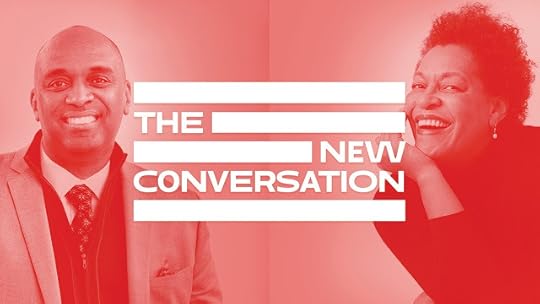
'In this series, Dr. Dwight A. McBride, President of The New School, converses with scholars, artists, activists, and a wide range of notable individuals to share their work, their experiences, and their views on a whole host of issues. Dr. McBride's first guest, Carrie Mae Weems, is a gifted, powerful artist whose work breaks boundaries across mediums and subjects. She has created masterpieces in everything from photography to performance, exploring issues of race, gender, and class. Her work has been shown in museums and galleries across the world. She is the first black woman to receive a solo retrospective at the Guggenheim.' -- The New School
'Passing' Stars Tessa Thompson, Ruth Negga and Andre Holland, and Director Rebecca Hall On The Complexity of Racial Identity
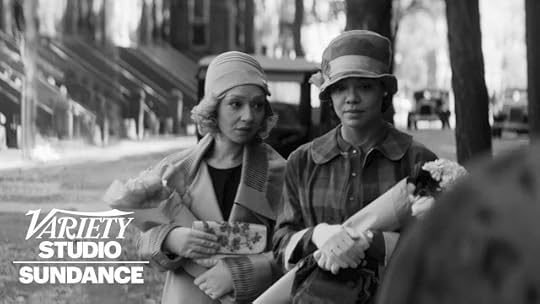
'Rebecca Hall's feature directorial debut Passing, based on the novel by Nella Larsen, dives into the nuance of racial identity and the complex realities of racial passing, with Variety's Sundance review touting Hall's work: "This radically intimate exploration of the desperately fraught concept of 'passing' — being Black but pretending to be white — ought to be too ambitious for a first-time filmmaker, but Hall’s touch is unerring, deceptively delicate, quiet and immaculate." Intimate is a particularly choice word to describe the project, as the film's story holds personal significance for all its cast -- including stars Tessa Thompson and Ruth Negga, both of whom are mixed race -- but the project is particularly connected to Hall's personal story.' -- Variety
Harlem and the Kamoinge Workshop
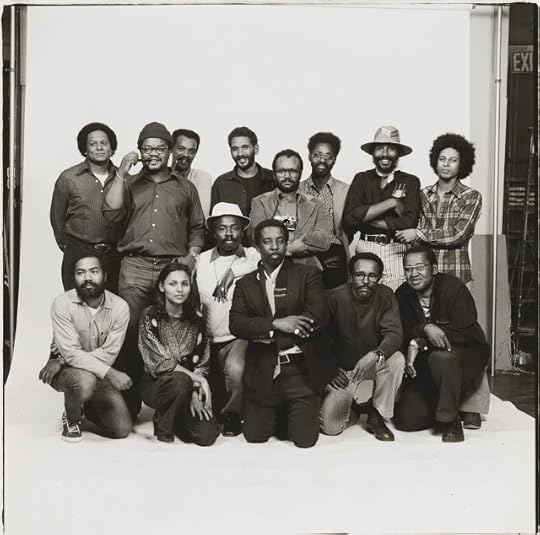
'Artists Anthony Barboza, C. Daniel Dawson, and Shawn Walker discuss the importance of Harlem in the development of their work and as the ground for the Kamoinge Workshop. In sharing their individual practices, they will reflect on Kamoinge’s role in the Black Arts movement as well as their efforts to preserve and share this history in their work. This event is moderated by Tanisha C. Ford, writer, cultural critic, and professor of history at the Graduate Center, CUNY. Ford is a co-founder of TEXTURES, a pop-up material culture lab creating and curating content on Black design, material life, and the built environment. She also co-edited, with Deborah Willis, Kwame Brathwaite: Black is Beautiful (Aperture 2019).'
February 5, 2021
Jenn Nkiru’s Panafrican Imagination: Black Studies as Aesthetic Practice
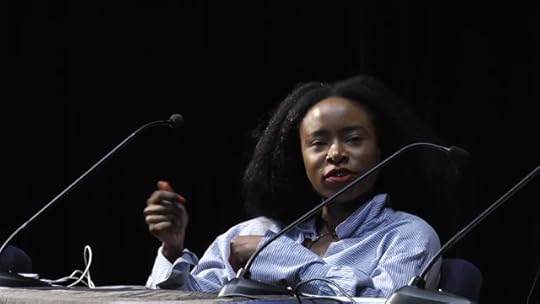
'liquid blackness, a research project on blackness and aesthetics at Georgia State University, in collaboration with the Film and Media Studies Department, Emory University, presented a public screening and artist talk dedicated to the award-winning cinematographer, writer, director, and curator of AFROFREQUENCY, Jenn Nkiru. Following Nkiru’s artist talk, liquid blackness founder and coordinator, Dr. Alessandra Raengo, Dr. Jenny Gunn, and Jazmine Hudson led a discussion and Q&A.'
Jenn Nkiru’s Panafrican Imagination: Black Studies as Aesthetic Practice from liquid blackness on Vimeo.
Drawn & Recorded: Blind Willie in Space
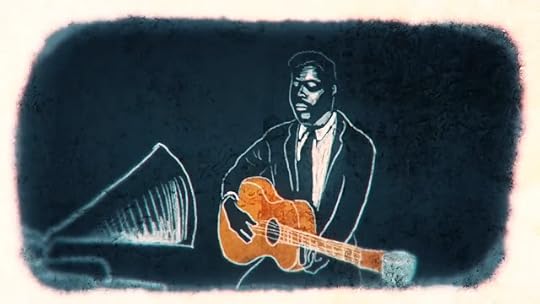 'The US gospel blues musician and evangelist ‘Blind’ Willie Johnson was born to a sharecropping family in the small town of Pendleton, Texas in 1897. After learning to play a cigar-box guitar, he performed as a popular street musician throughout Texas, eventually recording 30 songs for Columbia Records between 1927 and 1930. Little notice was taken of his death in 1945, and much of his biography remains a mystery. What is certain, however, is that today his legendary low-register howl and slide guitar persists, both on our planet and in interstellar space. Here on Earth, his music influenced the likes of Bob Dylan, Led Zeppelin and Howlin’ Wolf. And just beyond the reaches of our solar system, his recording of his song Dark Was the Night, Cold Was the Ground (1927) is one of 27 pieces of music selected for the Voyager spacecraft’s famed ‘Golden Records’, intended to capture the range of musical expression. This installment from the US animator Drew Christie’s series Drawn & Recorded combines biography and mythology to recount how Johnson’s music made the unlikely journey from the streets of rural Texas to the stars.'
'The US gospel blues musician and evangelist ‘Blind’ Willie Johnson was born to a sharecropping family in the small town of Pendleton, Texas in 1897. After learning to play a cigar-box guitar, he performed as a popular street musician throughout Texas, eventually recording 30 songs for Columbia Records between 1927 and 1930. Little notice was taken of his death in 1945, and much of his biography remains a mystery. What is certain, however, is that today his legendary low-register howl and slide guitar persists, both on our planet and in interstellar space. Here on Earth, his music influenced the likes of Bob Dylan, Led Zeppelin and Howlin’ Wolf. And just beyond the reaches of our solar system, his recording of his song Dark Was the Night, Cold Was the Ground (1927) is one of 27 pieces of music selected for the Voyager spacecraft’s famed ‘Golden Records’, intended to capture the range of musical expression. This installment from the US animator Drew Christie’s series Drawn & Recorded combines biography and mythology to recount how Johnson’s music made the unlikely journey from the streets of rural Texas to the stars.' Drawn & Recorded: Blind Willie in Space from Drew Christie on Vimeo.
Left of Black S11 · E13 | Daniel Royles on HIV/AIDS & the Black Community
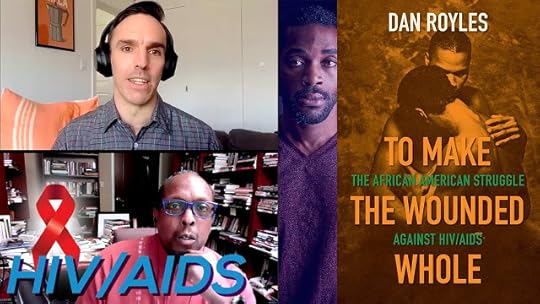
The HIV/AIDS epidemic impacts the entire nation but most especially those communities already vulnerable to social injustice– the African American community. As with COVID-19, the disparities felt by Black & brown communities due to systemic racism are exacerbated when a global virus threatens everyone's health, calling attention to the precarity of marginalized groups. But what did AIDS activism look like for African Americans in the early days of the AIDS crisis? On this episode of Left of Black, host Mark Anthony Neal is joined by Prof. Daniel Royles, Assistant Professor of History at Florida International University and the author of To Make the Wounded Whole: The African American Struggle Against HIV/AIDS, published by UNC Press.
Artist Ellen Gallagher and Master Printer Craig Zammiello on "DeLuxe"
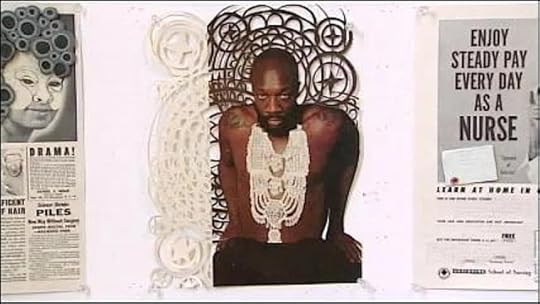
'Episode #059: Master Printer Craig Zammiello and artist Ellen Gallagher discuss their working relationship during the process of creating "DeLuxe" (2004-05), a suite of 60 individual works employing both traditional and non-traditional printmaking techniques.' -- Art21
February 4, 2021
“Whitey on the Moon” or Summer Of Soul and the Legacy of the Harlem Cultural Festival by Mark Anthony Neal
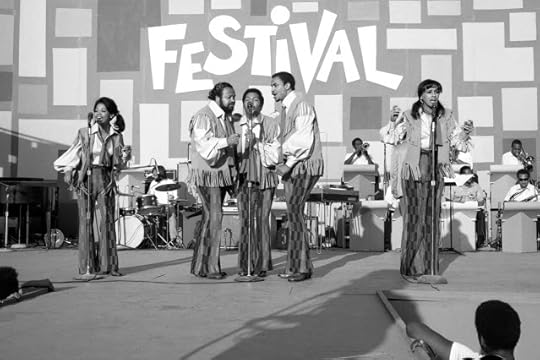
“Whitey on the Moon” or Summer Of Soul and the Legacy of the Harlem Cultural Festival
by Mark Anthony Neal | @NewBlackMan | NewBlackMan (n Exile)
Summer Of Soul (...Or, When The Revolution Could Not Be Televised) is the directorial debut of Ahmir “Questlove” Thompson, a contemporary impresario of the cool scale of Blackity-Blackness. The film is drawn from found footage from the Harlem Cultural Festival, a series of open-air concerts held in Harlem’s Mt. Morris Park during the summer of 1969. Long misrepresented as the Black Woodstock – Woodstock doesn’t open until two months after the first concerts in Mt. Morris Park – the concert series was a gift to Harlem residents, and a source of many memories, recalled throughout the film by those who were in attendance. As Harlem resident Musa Jackson remembers the park smelled like “Afro-Sheen and Chicken.”
The Harlem Cultural Festival was the brainchild Tony Lawrence, a St. Kitts born college track star, lounge singer and all-around Harlem Dandy (check the wardrobe changes throughout Summer of Soul), who as reported by the Pittsburgh Courier in 1965, had been asked by Princess Margret to perform at the Royal Ball in celebration of Jamaican Independence in 1962. Laurence parlayed a position as director of the John F. Kennedy Youth Foundation into a gig in the Parks Department under the administration of New York City Mayor John V. Lindsey, and it was in that role that he began summer programming that was eventually scaled to the Harlem Cultural Festival.
The diverse artists and music that appear on those Mt. Morris Park stages were always already at home in Harlem – if not in Harlem’s famed night spots and places of worship, surely on the radios and record players in the places and spaces that Harlem’s citizens made home. Harlem was Black America’s melting pot, more cosmopolitan than the City of New York itself – where Fidel Castro laid his head instead of New York’s better-known places of lodging, when he famously visited the city in 1960. And the Harlem of the late 1960s, in the aftermath of 1965 Immigration act, was a community in flux, reflected in the array of artists that appear on the bill of the Harlem Cultural Festival. For every stalwart of Black music at the time – Nina Simone, Stevie Wonder, Mahalia Jackson, Max Roach, and B.B. King – there were artists that complicated simplistic views of Black music like Ray Barreto, Herbie Mann (with a young vibraphonist named Roy Ayers), Mongo Santamaria (Mr. “Watermelon Man” himself), and Hugh Masekela, whose “Grazin’ in the Grass” was one of the biggest hits of 1968.
For anyone who is apt to place Black music and by extension Blackness into a box, Summer of Soul explodes those conventions with a view of Black music that was as liberatory and avant-garde as the very notion of Black Power was at the end of the 1960s. As commentator Greg Tate offers it was a moment of “Neo-Super Blackness”. And while the film’s attempt to frame the summer of 1969 as something unique in the air seems arbitrary – as if Watts didn’t happen in 1965, Newark in 1967, and everywhere, Ghetto America wasn’t still smoldering in the aftermath of Martin Luther King, Jr.’s murder – there's no question there was an alignment of something powerful in that park during the Summer of 1969.
The opening show from June 29th of 1969 was a metaphor for the eclecticism that would follow. The headline act was The Fifth Dimension, with The Edwin Hawkins Singers, whose classic “Oh Happy Day” peaked on the Pop charts that very same month, Max Roach and Abbey Lincoln, and legendary Nigerian percussionist Babatunde Olatunji filling out the bill. The headliners may have been the oddest act to appear over the course of the summer as the group was most known for middle-of-the-road pop fare like “Up-Up and Away” which recalled the music of The Association who had topped the pop charts with “Cherish” and “Windy” in 1967, and the now iconic “Stoned Soul Picnic”, one of many of their hits that were written by singer-songwriter Laura Nyro.
When the 5th Dimension hit the Harlem stage that afternoon with their Wonder Bread Soul – co-lead-singer Marilyn McCoo admits in the film that it was the group’s first time performing in Harlem – they did so armed with a number one-pop hit in “Aquarius/Let the Sunshine In (The Flesh Failures)", a medley of two songs featured in the hit Broadway musical Hair. It is on the second part of the medley – both on the actual record and in the live performance – where co-lead singer, the now Rev. Billy Davis, Jr., digs into his Gospel bag and transforms the song into a sanctified flight. McCoo and Davis, who have been married since 1969, and who had their own pop success with the classic “You Don’t Have to be a Star” in 1976, are visibly moved watching the footage of themselves on screen. It was a homecoming, and one of many transcendent moments in the film.
Part of the genius of the film, and notably the work of film editor Joshua L. Pearson, whose credits include What Happened, Miss Simone?(2015), is the seamlessness in which the performances transition as if the concert occurred over the course of one afternoon, as opposed to five concerts over two months. This is particularly compelling when Davis takes the movie to church with “Let the Sunshine In” and opens the portal for performances from The Staple Singers and Mahalia Jackson, who headlined the show that was recorded two weeks later. The Staple Singer were still in their Gospel-Folk mode – they had only signed with Al Bell’s Stax label the year before – and were still two years away from their signature tracks “Respect Yourself” and “I’ll Take You There”. Yet even then the group understood, as lead singer Mavis Staples recalls her father Roebuck “Pops” Staples saying, “you will hear every kind of music in our songs.”
Mahalia Jackson was legitimately the biggest star to grace the stage during the concert series, at least from the perspective of Black America at the time. Aretha Franklin was the “Queen of Soul”, in part because Jackson was simply the Queen – actual Black royalty, who served as personal streaming service to the most powerful Black man in America in the 1960s, in Martin Luther King, Jr.. At the show’s closing, as Jackson, The Staple Singers and Ben Branch and the Operation Breadbasket Band came together to sing Thomas Dorsey “Precious Lord, Take My Hand,” in tribute to the late Martin Luther King, Jr., Mavis Staples remembers Jackson, who was visibly in ill-health, asking her to sing lead with her. As Staples reflects in the film, it felt like a passing of the torch, and even more so when Jackson literally shares the mic with Staples in an act of affirmation. The film also highlights a young Rev. Jesse Jackson, who in light of his role that day, and his memorable oratory on Cannonball Adderley’s live Country Preacher(recorded later in 1969) and at WattsStax in 1972, might be best thought of as thehype man for the Black struggle, and in that regard he remains peerless.
As commentator the Rev. Al Sharpton shares in the film, “Gospel was more than religion. Gospel was the therapy for the stress and pressure of being Black in America.” Nowhere is this more apparent than when Sly & The Family Stone take the stage. Raised in the sanctified church in Sacramento (where Cornel West was a fellow parishioner), the Gospel impulse the group’s sound was always apparent, if unrefined – and that was the point, as the traditions of Black spirituality could serve as a launching point for a transformative experience. Throughout much of his career, Stone has been a mercurial figure, who fifty years before Lauryn Hill, his appearance on any stage was likely a game-time decision. Sly & the Family Stone were the only act to appear at both the Harlem Cultural Festival and Woodstock.
The film’s centerpiece are the performances that occur on July 20, 1969, which incidentally is also the day that Apollo 11 landed on the moon. It was Motown day at the Harlem Cultural Festival as label acts, Stevie Wonder, Gladys Knight & The Pips and David Ruffin, two years removed from The Temptations, appeared on stage. This was decidedly Motown’s b-team; Ruffin was still finding his way musically divorced from the quartet that rounded out the classic Temptations formation, while Knight and the Pips – and it’s so easy to be distracted by the beauty of the young Knight and the stellar footwork of The Pips – were largely an afterthought at Motown. Yet the irony of Motown was that the so-called b-team – and where were Jr. Walker & the All-Stars? – were those who stayed close to the gritty, Southern Soul that the Black public preferred and Motown often eschewed for the sake of music and acts that had more crossover appeal.
July 20th, belonged to the headliner, a 19-year-old, whose stunning and admittedly shocking drum solo opens the film, where viewers might see the coming alive of something in the former “Little Stevie Wonder” that would not be contained by Motown or the confines of what Soul music was supposed to be at the time. Indeed, in some of the keyboard work during Wonder’s set, one can hear riffs of what would later become “You Haven’t Nothin”. If Summer of Soul points to a rupture, a projection into the future of Black cultural and political life, Wonder’s set at the Harlem Cultural Festival might have been the literal moment that that future made itself evident.
Local news outlets were in Mt. Morris Park on July 20, 1969, less out of a desire to cover the concert, than they were interested in getting a view of how Black Americans viewed the achievement of landing on the moon. Gil-Scott Heron, who was a still relatively unknown Harlem bard at that time, might have been in Mt. Morris Park that day and used the experience as inspiration for his poem “Whitey on the Moon”. The poem which appeared on his first album Small Talk at 125th and Lenox, is notable for the lyrics “I can't pay no doctor bill (but Whitey's on the moon) / Ten years from now I'll be paying still (while Whitey's on the moon)”. And indeed, that was the sentiment of many of the folk interviewed that day, including a Black comedian of some repute, who was about to come up in the world as the star of Sanford and Son, who told a reporter, “Black man wants to go to Africa, White man’s going to the moon. I’mma stay in Harlem with the Puerto Ricans and have me some fun.” Redd Foxx’s comments are the perfect coda for Summer of Soul.
Summer of Soul, or rather the bringing of the documentary to market, is a metaphor for the evergreen quality of Black culture; the footage was nearly untouched for forty years and attempts to produce a documentary of the footage go back at least a decade. Maybe a little late, but always right on time as the adage goes, Summer of Soul is as timely today as it was when the Harlem Cultural Festival embedded itself in Harlem’s Mount Morris Park during the summer of 1969.
***
Mark Anthony Neal is the James B. Duke Distinguished Professor of African & African American Studies at Duke University. He is the author of several books including Looking for Leroy: Illegible Black Masculinities and the forthcoming Black Ephemera: The Challenge and the Crisis of the Black Musical Archive.
@font-face {font-family:Helvetica; panose-1:0 0 0 0 0 0 0 0 0 0; mso-font-charset:0; mso-generic-font-family:auto; mso-font-pitch:variable; mso-font-signature:-536870145 1342208091 0 0 415 0;}@font-face {font-family:"Cambria Math"; panose-1:2 4 5 3 5 4 6 3 2 4; mso-font-charset:0; mso-generic-font-family:roman; mso-font-pitch:variable; mso-font-signature:3 0 0 0 1 0;}@font-face {font-family:Calibri; panose-1:2 15 5 2 2 2 4 3 2 4; mso-font-charset:0; mso-generic-font-family:swiss; mso-font-pitch:variable; mso-font-signature:-536859905 -1073732485 9 0 511 0;}p.MsoNormal, li.MsoNormal, div.MsoNormal {mso-style-unhide:no; mso-style-qformat:yes; mso-style-parent:""; margin:0in; mso-pagination:widow-orphan; font-size:12.0pt; font-family:"Calibri",sans-serif; mso-ascii-font-family:Calibri; mso-ascii-theme-font:minor-latin; mso-fareast-font-family:Calibri; mso-fareast-theme-font:minor-latin; mso-hansi-font-family:Calibri; mso-hansi-theme-font:minor-latin; mso-bidi-font-family:"Times New Roman"; mso-bidi-theme-font:minor-bidi;}.MsoChpDefault {mso-style-type:export-only; mso-default-props:yes; font-family:"Calibri",sans-serif; mso-ascii-font-family:Calibri; mso-ascii-theme-font:minor-latin; mso-fareast-font-family:Calibri; mso-fareast-theme-font:minor-latin; mso-hansi-font-family:Calibri; mso-hansi-theme-font:minor-latin; mso-bidi-font-family:"Times New Roman"; mso-bidi-theme-font:minor-bidi;}div.WordSection1 {page:WordSection1;}
Hip-Hop's Female Pioneers
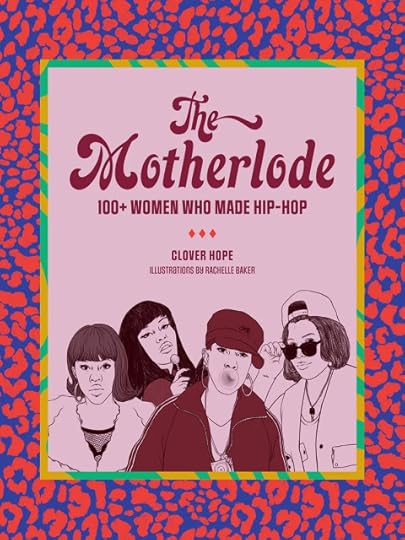
'Writer and editor Clover Hope joins All Of It to discuss her new book, The Motherlode: 100+ Women Who Made Hip-Hop, which features illustrations by Rachelle Baker. The book looks at the careers of over 100 female rappers, including Lauryn Hill, Missy Elliott, Nicki Minaj, and Megan Thee Stallion, and explores the deep influences of women on the genre.'
Ben Okri Reads “A Wrinkle in the Realm”
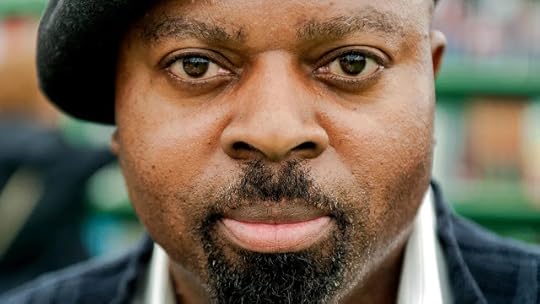
'Ben Okri reads his story from the February 8, 2021, issue of the New Yorker magazine. Okri is the author of eleven novels, including The Famished Road, which won the Booker Prize in 1991, and The Freedom Artist, which came out in 2019. His story collection, Prayer for the Living, was published in the U.S. in February of 2021.'
Mark Anthony Neal's Blog
- Mark Anthony Neal's profile
- 30 followers



